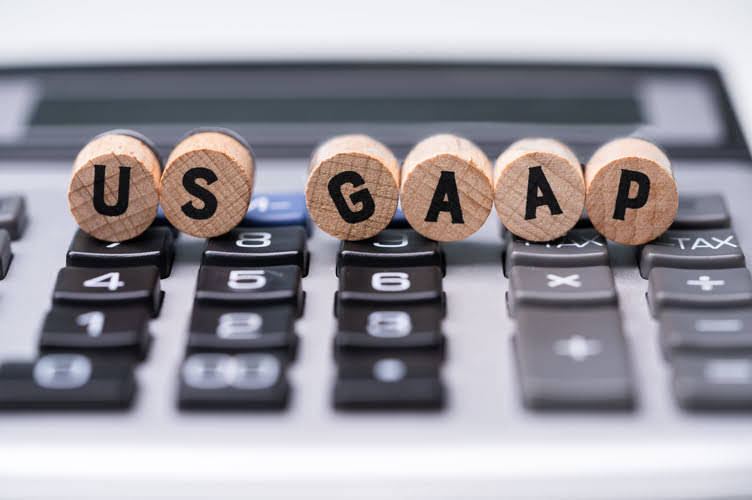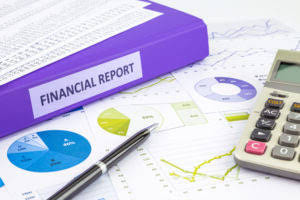
Remember that a company must present an income statement, balance sheet, statement of retained earnings, and statement of cash flows. However, it is also necessary to present additional information about changes in other equity accounts. This may be done by notes to the financial statements or other separate schedules. However, most companies will find it preferable to simply combine the required statement of retained earnings and information about changes in other equity accounts into a single statement of stockholders’ equity. It gives shareholders, investors and the company’s owner a true picture of how the business is performing and is usually measured monthly, quarterly or annually. This document forms a core part of a company’s financial statements, alongside the balance sheet, income statement, and cash flow statement.
Do you already work with a financial advisor?
If accounts payable decreased by $9,000 the corporation must have paid more than the amount of expenses that were included in the income statement. Paying more than the amount in the income statement is unfavorable for the corporation’s cash balance. As a result the $9,000 decrease in accounts payable will appear in parentheses on the SCF. First, the beginning equity is reported followed by any new investments from shareholders along with net income for the year.

What is the statement of shareholders’ equity?

Adam received his master’s in economics from The New School for Social Research and his Ph.D. from the University of Wisconsin-Madison in sociology. He is a CFA charterholder as well as holding FINRA Series 7, 55 & 63 licenses. He currently researches and teaches economic sociology and the social studies of finance at the Hebrew University in Jerusalem. PwC refers to the US member firm or one of its subsidiaries or affiliates, and may sometimes refer to https://www.bookstime.com/ the PwC network.
- “Here are three reasons why a Statement Of Shareholder Equity is a valuable tool for gauging the health of a business,” says Steinhoff.
- This means including all of a company’s business transactions in the proper accounting period.
- Understanding shareholders’ equity is one approach for investors to understand about a company’s Financial Analysis health.
- Instead, the corporation will put aside a portion of its revenues to pay dividends, which is typically specified in the stock agreement.
- The statement of cash flows highlights the major reasons for the changes in a corporation’s cash and cash equivalents from one balance sheet date to another.
- This is often done by either borrowing money or issuing shares of stock, both of which can result in additional obligations.
Stockholder’s Equity Statement
- It could also highlight long term trends and potential issues, such as persistent dwindling profits or increasing liabilities.
- The retained earnings portion reflects the percentage of net earnings that were not paid to shareholders as dividends and should not be confused with cash or other liquid assets.
- Similarly, the hourly payroll processed during the first few days in January and paid on January 6 is likely to include the cost of employees working during the last few days in December.
- It provides detailed information on changes from stock issuance, dividend payments, share repurchases, and shifts in retained earnings or accumulated other comprehensive income.
- Shareholders’ equity is the residual claims on the company’s assets belonging to the company’s owners once all liabilities have been paid down.
Conversely, a consistently decreasing equity may imply potential financial distress. The statement of shareholders’ equity gives investors a much better understanding of how the individual equity accounts have changed during the period. A statement of shareholders’ equity details the changes within the equity section https://www.facebook.com/BooksTimeInc/ of the balance sheet over a designated period of time. The report provides additional information to readers of the financial statements regarding equity-related activity during a reporting period. The statement is particularly useful for revealing stock sales and repurchases by the reporting entity; a publicly-held company in particular may engage in these activities on an ongoing basis.
What Is Shareholder Equity (SE) and How Is It Calculated?
- A different way to calculate corporate equity is to subtract the value of treasury shares from the value of share capital and retained earnings.
- Profits are compared against expenses and deductions to determine net income.
- Its current liabilities, which included accounts payable, deferred revenue, and most debt, amounted to $137.3 billion.
- Second all dividends and net losses are subtracted from the equity balance giving you the ending equity balance for the accounting period.
- If a company’s shareholder equity remains negative, it is considered to be balance sheet insolvency.
- Here is an example of how to prepare a statement of stockholder’s equity from our unadjusted trial balance and financial statements used in the accounting cycle examples for Paul’s Guitar Shop.
- Under the indirect method, the first amount shown is the corporation’s net income (or net earnings) from the income statement.
There will be grand total figures at the top and bottom of the matrix for the total amount of beginning and ending shareholders’ equity. Founded in 1993, The Motley Fool is a financial services company dedicated to making the world smarter, happier, and richer. The Motley Fool reaches millions of people every month through our premium investing solutions, free guidance and market analysis on Fool.com, top-rated podcasts, and non-profit The Motley Fool Foundation. We have financial relationships with some companies we cover, earning commissions when readers purchase from our partners or share information about their needs.

Ask a Financial Professional Any Question
Basically, stockholders’ equity is an indication of how much money shareholders would receive if a company were to be dissolved, all its assets sold, and all debts paid off. Companies that pay dividends are effectively redistributing a portion of their earnings back to the shareholders. When dividends are paid out, they are deducted from the company’s retained earnings and therefore reduce equity. The Shareholders’ Equity Statement holds paramount significance, serving as a crucial financial statement for various stakeholders including the company, shareholders, and potential investors. If the same assumptions are applied for the next year, the end-of-period shareholders equity balance in 2022 comes out to $700,000. Now that we’ve gone over the most frequent line items in the shareholders’ equity section on a balance sheet, we’ll create an example forecast model.

Statement of Shareholders Equity: In-Depth Explanation and Analysis

This, in turn, directly impacts example statement of stockholders equity the shareholders as increased equity suggests greater return on their investment, fostering greater confidence among investors. Understanding and analyzing changes in shareholders equity can provide insightful information on the financial health and performance of a company. Evaluating these changes over different periods, such as annually or quarterly, may capture the definitive shifts in the company’s capital structure and overall solvency. From a shareholder’s point of view, the Shareholders’ Equity Statement ensures transparency – a significant component that bolsters trust and confidence in the management. Additionally, shareholders can monitor the company’s net worth related to their shares, determining whether their investment has grown or depreciated over certain time horizons.
Components of Shareholders Equity Statement
- This is an account on a company’s balance sheet that consists of the cumulative amount of retained earnings, contributed capital, and occasionally other comprehensive income.
- When dividends are paid out, they are deducted from the company’s retained earnings and therefore reduce equity.
- This in depth view of equity is best demonstrated in the expanded accounting equation.
- The statement, which reveals changes in equity over a specified period, gives stakeholders a clear look at how equity is being managed.
- In these types of scenarios, the management team’s decision to add more to its cash reserves causes its cash balance to accumulate.
On the other hand, if the difference declines, it depicts that the maturity period is around the corner, and there is no scope for further growth. If some journal entries must be written every month, it is helpful to assign journal entry numbers to these standard journal entries or recurring journal entries. For example, a company may designate JE33 (Journal Entry #33) to be the recurring accrual of expenses that have occurred but have not yet been recorded in Accounts Payable as of the end of a month. Perhaps the timeline/checklist will indicate that JE33 must be submitted by the accounts payable clerk six days after each month ends.
Shareholders Equity Statement and Corporate Governance
The retained earnings are used primarily for the expenses of doing business and for the expansion of the business. Long-term assets are possessions that cannot reliably be converted to cash or consumed within a year. They include investments; property, plant, and equipment (PPE), and intangibles such as patents. Retained earnings are part of shareholder equity as is any capital invested in the company.
